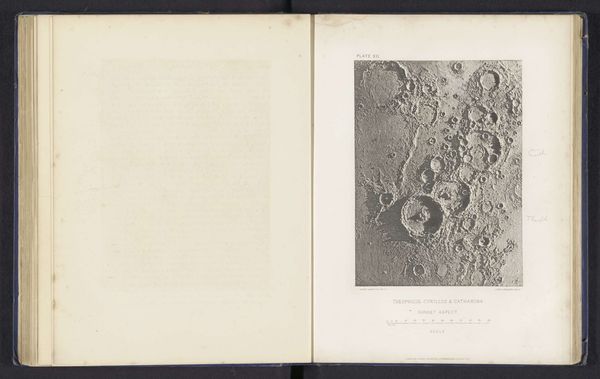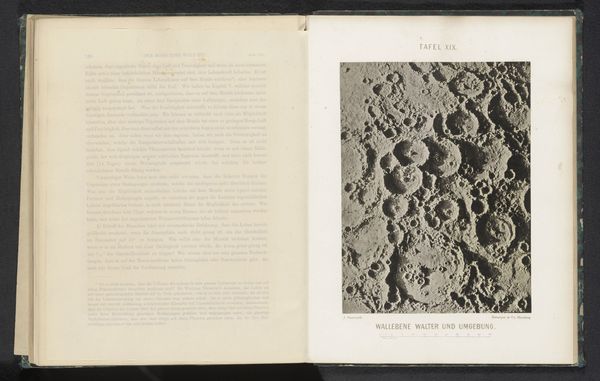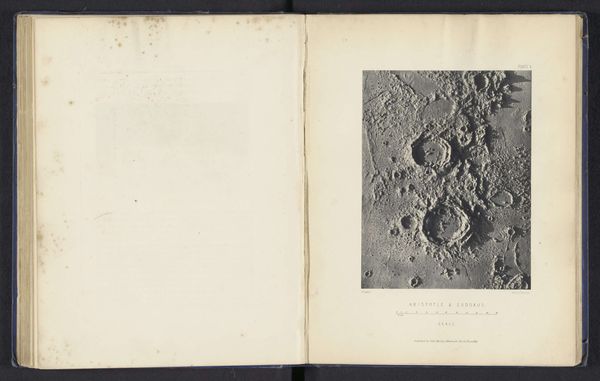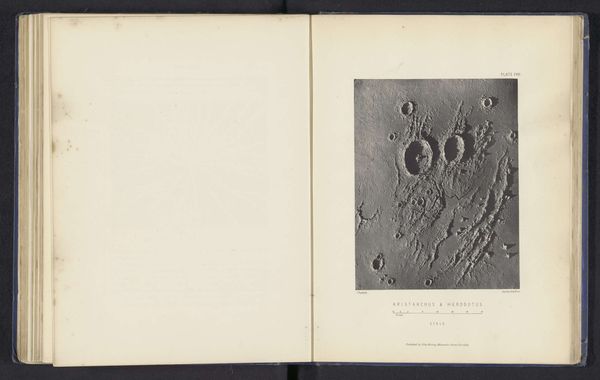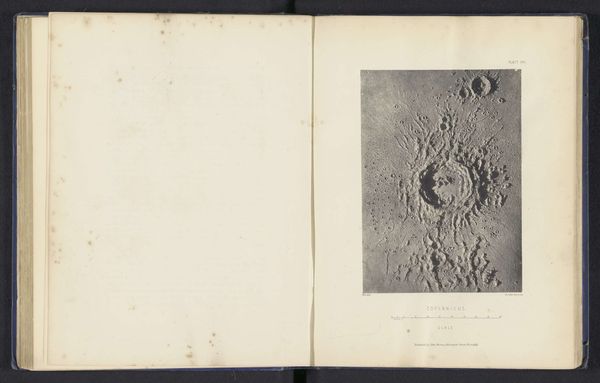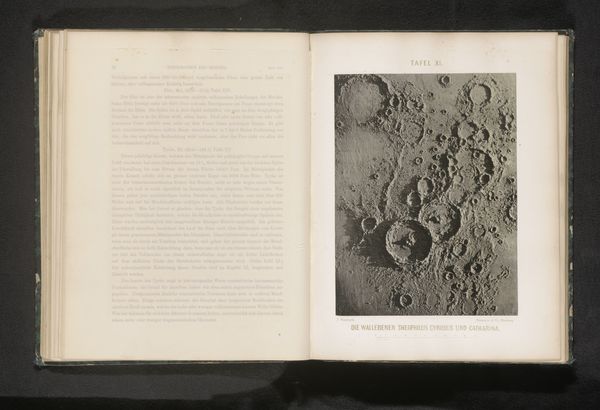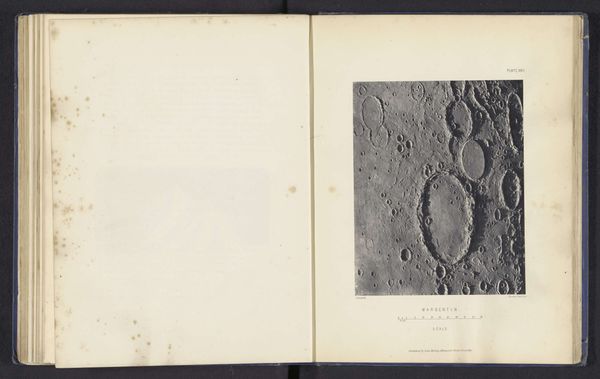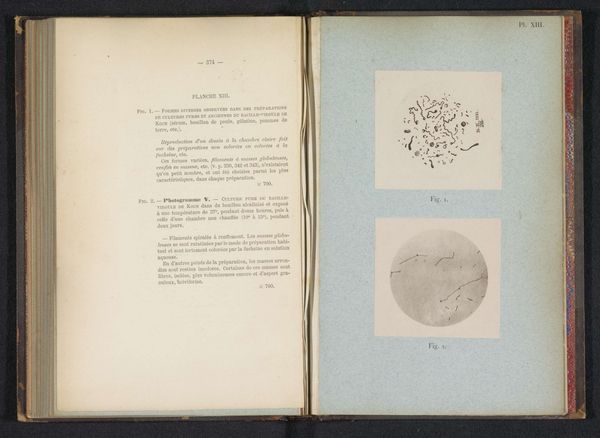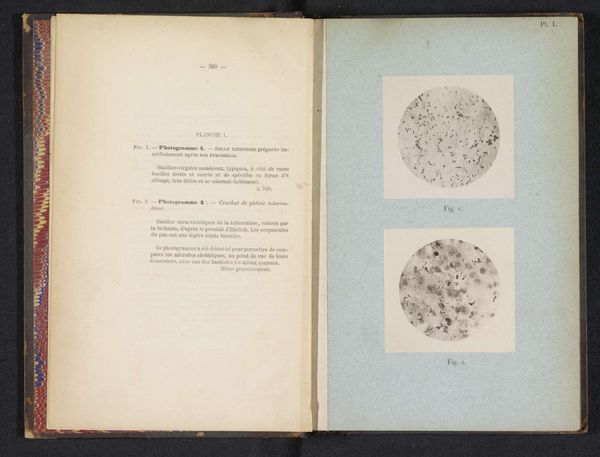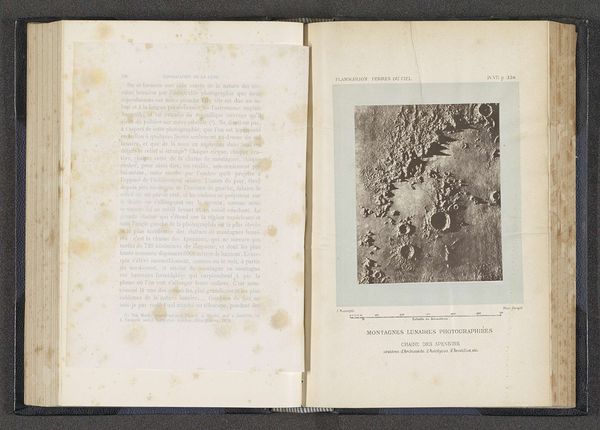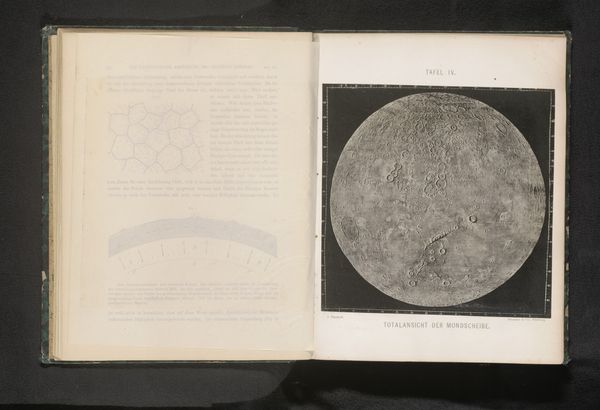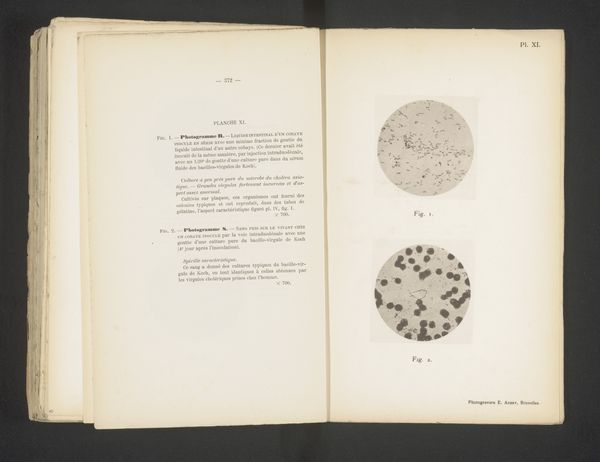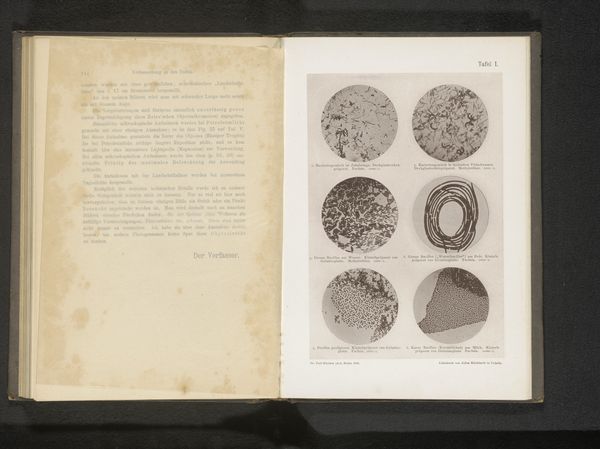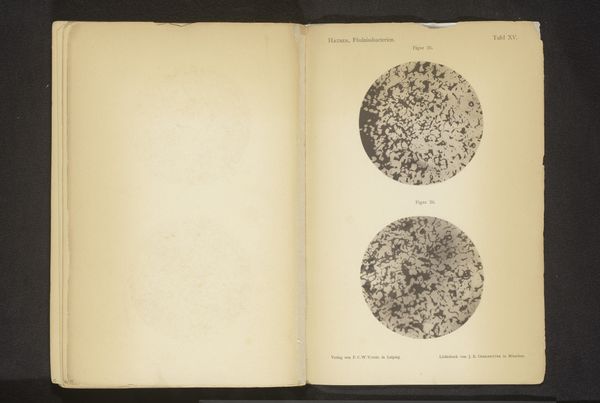
lithograph, print
#
lithograph
# print
#
landscape
#
geometric
#
academic-art
#
realism
Dimensions: height 187 mm, width 145 mm
Copyright: Rijks Museum: Open Domain
Curator: Looking at this 1873 lithograph print titled "Overlapping Craters," created by J.H. & F.C. McQueen, what strikes you first? Editor: The texture! It feels so immediate, despite being a rendering of something so distant. You can almost feel the grit and the impact. It reminds me of working with clay, constantly reshaping, leaving traces. Curator: It’s interesting that you pick up on that tactile quality. This image would have been quite powerful, appearing at a time of increasing fascination with scientific exploration, even space. It puts empirical knowledge within reach. Editor: Precisely, it democratizes knowledge. It's a print, readily reproducible. Someone was likely tasked with meticulously translating observations into this lithograph—transferring expertise into something tangible. The labor involved is fascinating; someone carefully etched and transferred all these little details to stone. Curator: The choice of lithography is significant here. It allowed for a greater level of detail and tonal range, compared to other printing methods available at the time. This contributed to a sense of scientific accuracy, supporting a kind of visual authority for the artists. Editor: It certainly evokes the visual language of scientific record, which at that time heavily leaned towards creating "objective" truths. You know, the print itself is almost geological. We can observe its material composition in the textures and in its monochrome. Curator: How so? Editor: Consider the layering, the way the ink sits on the page, building up to create those shadows within the craters. The process mimics the geological stratification being depicted, this gradual build up of cosmic debris through repetitive meteoritic impact! Curator: I see your point. I think we can say the success of such work relied upon access to, and understanding of, new advances in printing production—in turn changing what it meant to document. Editor: Absolutely, and considering that it allowed new audiences, like ordinary people, access and understanding of knowledge about our universe, it becomes very clear that materiality impacts comprehension!
Comments
No comments
Be the first to comment and join the conversation on the ultimate creative platform.
